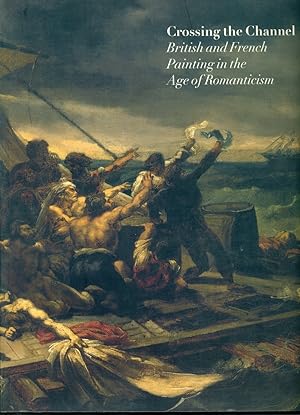Noon Patrick Author Bann Setephen (1 results)
Product Type
- All Product Types
- Books (1)
- Magazines & Periodicals
- Comics
- Sheet Music
- Art, Prints & Posters
- Photographs
- Maps
- Manuscripts & Paper Collectibles
Condition
Binding
- All Bindings
- Hardcover
- Softcover (1)
Collectible Attributes
- First Edition (1)
- Signed
- Dust Jacket
- Seller-Supplied Images (1)
- Not Print on Demand (1)
Free Shipping
- Free US Shipping
Seller Location
Seller Rating
-
Crossing the Channel: British and French Painting in the Age of Romanticism
Published by The Metropolitan Museum of Art - In Association with Tate Publishing, New York, 2003
ISBN 10: 1854374591ISBN 13: 9781854374592
Seller: Don's Book Store, Albuquerque, NM, U.S.A.
Book First Edition
Trade Paperback. Condition: Very Good. First Edition. 290 Pages Indexed. Nice condition with a nearly flawless interior text and illustration pages. The Exhibition began at Tate Britain, London and ran 5 February - May 2003. Then touring to The Minneapolis Institute of Arts, Minneaolis 8 June - 7 September 2003. The exhibition was at The Metropolitan Museum of Art, New York 7 October 2003 to 4 January 2004. This exhibition explores the extraordinary network of cultural interchange that developed between Britain and France in the three or so decades following the end, in 1815, of their long war - a conflict which had raged with only occasional respites since the early 1790s. Sustained hostility in politics was to give way to mutual admiration in the arts. Focusing primarily on painting, the exhibition traces both the impact of French Romanticism on British art, including through the sensational display in London of Theodore Cericault's Raft of the Medusa in 1820. (See Cover). Perhaps the range and force of Britain's cultural impact on France in these years will come as some surprise. Though Lord Byron's literary influence on Eugene Delacroix is well known, the prodigious consumption of Walter Scott in France may be less understood; and while John Constable's success at the Paris Salon exhibition of 1824, and his admiration by Delacroix, forms part of our standard histories of British art. The web of connections and its expression through French landscape painting through the 1830s and beyond, may prove to be one of this exhibition's most significant revelations. Though there had certainly been moments of productive cross-channel interchange in the previous century, they were readily undermined by political tensions and usually short-lived. The kind of sustained cultural dialogue surveyed by this exhibition was unprecedented and would furnish a model for subsequent generations.


